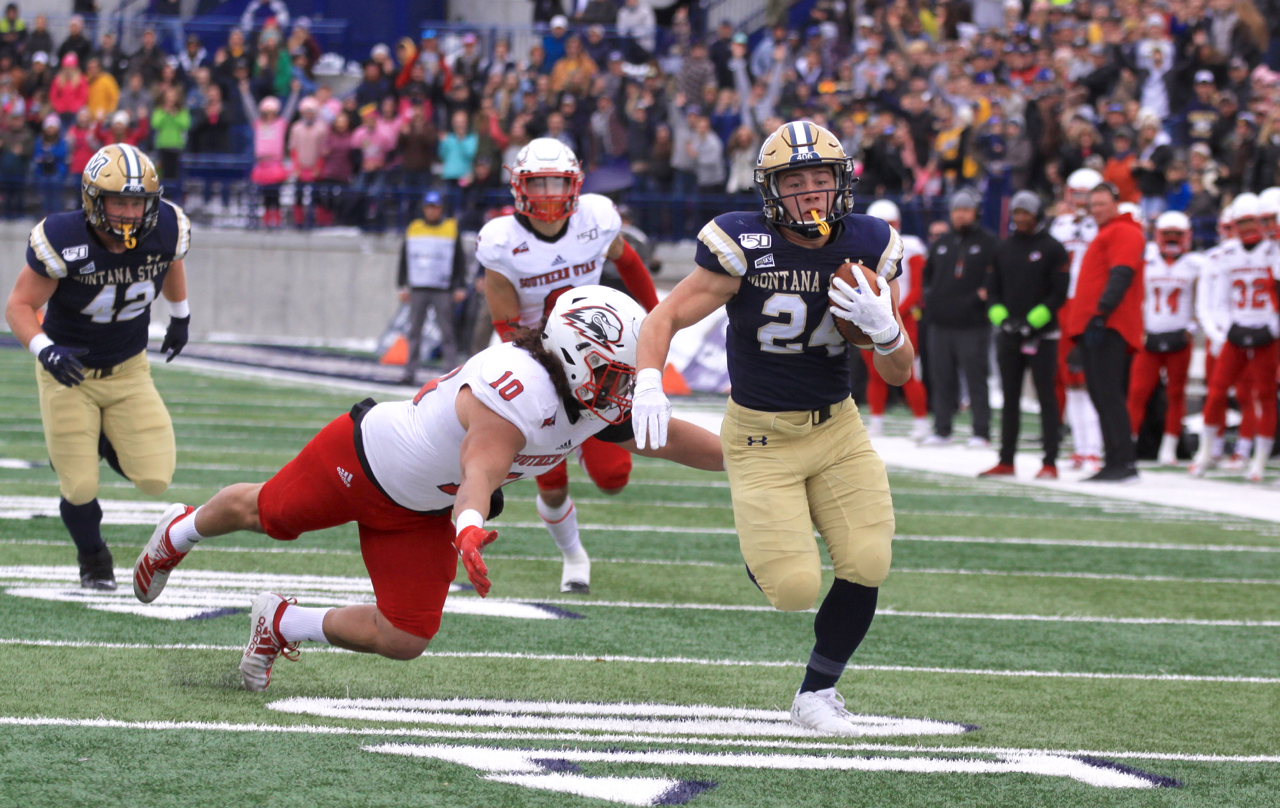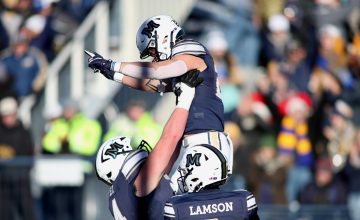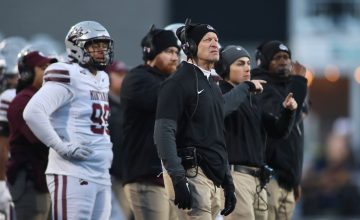BOZEMAN, Montana — As Brent Vigen enters his second season leading Montana State, the questions are much different than entering the first season of his first head coaching gig.
Jeff Choate hasn’t coached a game at Montana State since 2019. And since Choate helped MSU to its first Final Four appearance in the FCS playoffs since 1984, Montana State has won 12 more games, advanced to a second straight national semifinal and played for the national title for the first time in 37 years.
Last year’s Bobcats surged all the way to Frisco, Texas led by a stout senior class almost entirely recruited by their former head coach and highlighted by a pair of defenders who ultimately had their names called in the NFL Draft.
Atlanta Falcon Troy Andersen and Los Angeles Ram Daniel Hardy are just two of the graduates from one of the best senior classes in school history. Any program, any level would have a challenge in trying to replace the most diverse pure athlete in the country (Andersen), the leading sack artist in the Big Sky Conference (Hardy) plus physically dominant defensive tackle Chase Benson, All-American offensive linemen Lewis Kidd and Taylor Tuiasosopo, LA Rams-bound free agent signee wide receiver Lance McCutcheon and Atlanta free agent signee Tre Webb.
Yet the wealth of talent Choate brought to Bozeman still has many layers. Vigen proved last season he can provide a steady hand. And that’s why Montana State, the preseason No. 4 team in the nation, enters 2022 with plenty of confidence despite such notable roster losses.
“I think about the way the national championship game went more than the playoff run and we want to get back there,” Montana State senior inside linebacker Callahan O’Reilly said, referring to the 38-10 loss to North Dakota State in the FCS title game that overshadowed arguably the greatest playoff run in school history. “Train like you are in last, play like you’re in first. Train motivated by those missed opportunities, play like we did in the playoffs.

“I think about the loss more than the high of the run but it also gives us the confidence that we’ve been there, we’ve played so long, we talked about national championship, national championship and now that we have been there, it’s a more achievable goal.”
For Montana State over the last five years — and to be honest, for most of the 21st century — success has started and ended with the quality of play up front. Choate built the Bobcats from the trenches out. MSU has had one of the most dominant run games in the Big Sky and the FCS over the last six years.
Plenty of young talent still highlights the roster. But can Montana State match its level from a season ago in the trenches? And given the way the Bobcats got bullied at the point of attack by North Dakota State in a 38-10 national championship game loss, matching last year’s level will not be good enough.
“You look back at that game and look at it with a critical eye, you understand that we did not win the line of scrimmage battle either way,” Vigen said. “We just cant’ change who we are in an instant. So you charge our guys to see how much bigger and stronger can we get from January to August?
“I think it’s about getting bigger and stronger. How do you do that? Recruiting, development, recruiting, development, competition. I think we have more of that, the competition pice on the o-line and d-line. That’s what ultimately brings the best out of any one of these individuals.
“Wherever we are at, we are at right now and we have to do the best with what we have. That game was a learning opportunity for us, it was disappointing but we’ve certainly moved on from it as well.”
You might’ve already guessed that two of the most intriguing position groups to watch entering the 2022 season at Montana State are along the fronts.
Factor in Tommy Mellott’s return for a much-anticipated sophomore year after quarterbacking the Bobcats to the title game in his first three career starts (all in the postseason) and the pending health (or lack there of) of All-American running back Isaiah Ifanse and MSU has plenty to iron out before its September 3 opener against McNeese State in Bozeman.
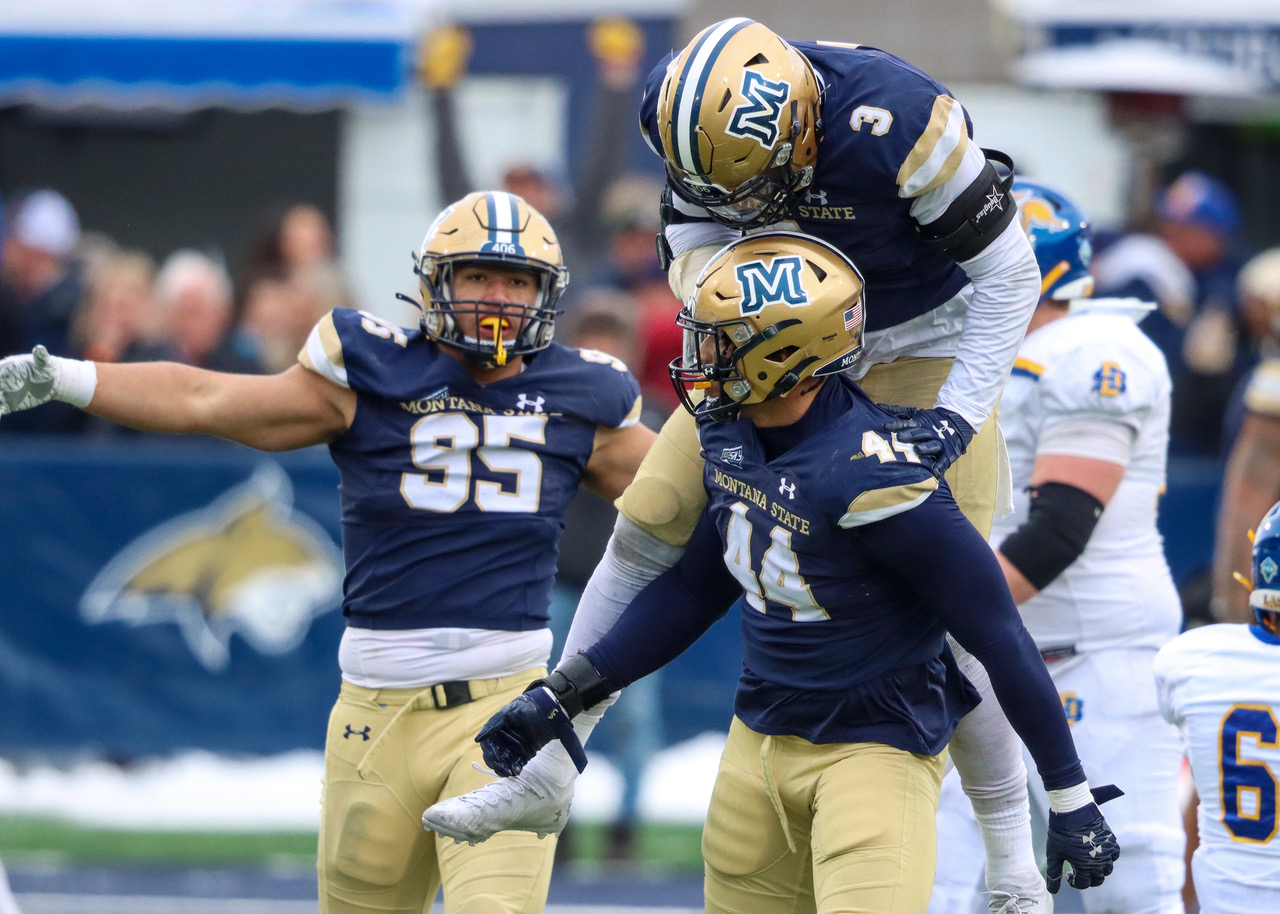
3. Front seven defensively
To list the names again would be redundant, although it’s certainly worth mentioning Amandre Williams, a talented, smooth defensive end who came to Montana State as one of Choate’s several transfers from Washington included in the list of losses.
The question of the off-season – how does Montana State replace Troy Andersen? The answer: you don’t.
Last year in a 24-20 win at Eastern Washington, one of nine straight victories by MSU, Andersen was tasked with covering EWU All-American wide receiver Talolo Limu-Jones. All Andersen did was erase the future NFL wide receiver from the game while still supporting his front seven teammates in the run game as well.
No one else can do that, maybe ever in the Big Sky Conference.
“There is no replacing Troy,” O’Reilly said on Montana State’s media day on August 5. “We can all take from him his preparation and working at a high level and we can all work together to replace a guy like that.”
The top candidates to take reps next to O’Reilly — a Bozeman native who was named to the preseason All-Big Sky defense — are junior Nolan Askelson and sophomore Danny Uluilakepa. Redshirt freshman Alex Johnson also got elevated reps during the spring.
The 6-foot-1, 220-pound Askelson is a Billings Senior product and former Montana Class AA Defensive MVP. He started six games as a redshirt freshman in 2019 but missed all but two games last year with a serious knee injury. He enters his junior year with 47 tackles in his career. He had five tackles and a sack against Wyoming plus six more tackles the next week against Drake before his season ended abruptly.
Uluilakepa is a former King County player of the year from the Seattle Area who’s been highly regarded when healthy since stepping on campus. But he missed all of the spring.

Up front, Brody Grebe already has enormous expectations on the edge. The Melstone, Montana native had 5.5 sacks in spot duty last season. Despite never starting a game, he was a preseason All-Big Sky selection, mirroring the same honor for Mellott on offense.
He will be book-ended by a combination of juniors Ben Seymour and David Alston. Seymour, a 6-foot-2, 220-pounder with anything but prototype size, had 12 tackles, 1.5 sacks and 4.5 tackles for loss after transferring from the College of the Canyons. Alston, a former Nebraska transfer with exactly prototype size at 6-4, 245 pounds, had five tackles and half a sack in his first season at MSU.
On the interior, MSU must replace Benson, a weight room machine who could power clean more than 400 pounds and bench press a quarter ton. But a variety of physically talented younger players got plenty of action last season, including San Diego native sophomores Sebastian Valdez and Blake Schmidt.
Vigen praised each for their off-season work.
“Size, strength, confidence,” Vigen said. “They both emerged in their own way last fall. But now, I think they saw this opportunity. Guys within that defensive line room need to step up. We lost some really valuable players but that doesn’t mean we need to slow down.”
Valdez is a physical marvel, a 6-foot-3, 285-pounder with low body fat and plenty of muscle mass. Despite playing a disruptive, non-playmaking role last season, the man his teammates call “Sea Bass” rolled up 38 tackles, 3.5 sacks and 5.5 tackles for loss during his freshman season. He signed with MSU in February of 2020 so last fall was actually his second year in school even though it was his first year playing college football.
Schmidt, who also prepped at Monte Vista High outside of San Diego, was highly recruited and actually a year older than Valdez. But he redshirted. He contributed 12 tackles last season. Now he’s up over 280 pounds as well and is chasing Chase Benson’s school power clean record.
“Those two in particular have developed a bunch physically and in experience,” Vigen said when asked about the Monte Vista twosome. “Nature takes its course with most of our guys but you can see in their mind set that ‘it’s my time to step up.’
Junior Blake Hehl will also get plenty of reps, especially in early down situations where he thrives, as will senior Kyle Rygg, MSU’s opening day starter next to Benson last season before losing his season to a knee injury.
Redshirt freshman Zach Black also has high regard within the program.
“With experience comes a different level of confidence and maybe a bigger tool box,” Vigen said. “Those guys are more confident, they have more in their arsenal that they know how to do and now we are just going to turn them loose.”
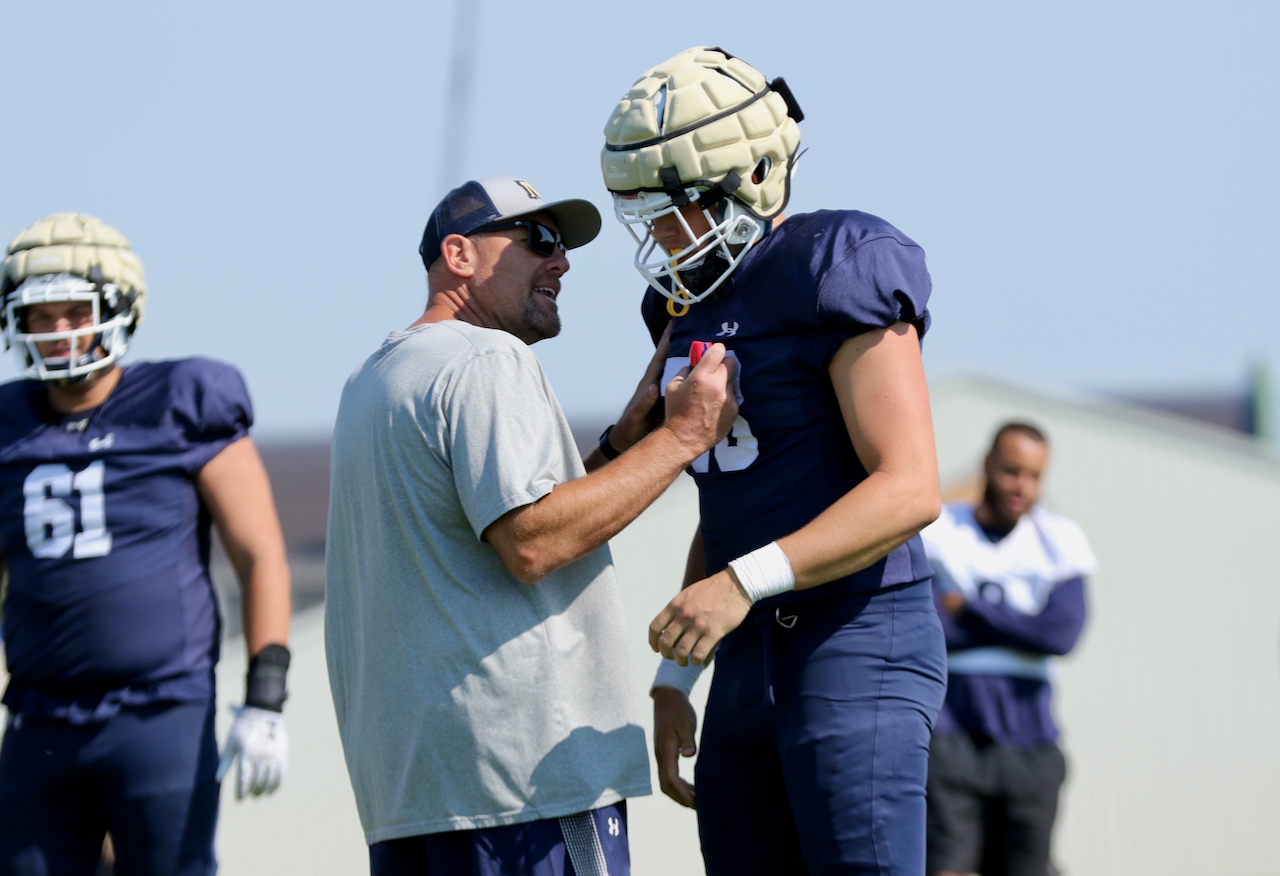
2. Offensive line
For 13 years, Montana State had one of the most revered assistant coaches in the region mentoring its offensive line. Jason McEndoo worked wonders under head coaches Mike Kramer and Rob Ash, mentoring some of the best offensive linemen to ever play at Montana State.
One of Choate’s first hires was getting his fellow Montana Western alum Brian Armstrong to join the Bobcats after a stint as the head coach at Rocky Mountain College. Choate also recruited a group of highly regarded offensive linemen with the intention of having a unit that started for multiple years together.
That was a reality through 2019 with Mitch Brott starting 50 games between the two tackle spots, plus Connor Wood, Zach Redd, Tuiasosopo and Kidd all starting early in their careers.
Now entering Year 2 under Vigen (Armstrong remains the offensive line coach), the unit is at a crossroads. Kidd plays for the New Orleans Saints. Tuiasosopo will be a tough physical presence to replace after two straight All-Big Sky campaigns. Wood transferred to Missouri. Redd decided to forego his final year of football. T.J. Session, a starter for eight games as a redshirt freshman last fall, transferred to Cal in the off-season.
That leaves the unit with one returning starter in 6-foot, 285-pound sophomore Justus Perkins. Based on the depth chart coming out of spring ball, only senior Joe McElroy and junior Cole Sain are upper classmen expected to be on the two-deep. And neither one entered fall camp on the first string.
“Having your stability come from the inside out is important,” Vigen said, referring to Perkins starting every game last season. The the center is the communicator, ideally the leader. I think that’s where Justus is at right now. And he’s got a level of confidence.
“But he also I think, understands that there was worked for him to do too, so we’re gonna have competition at all those spots.”
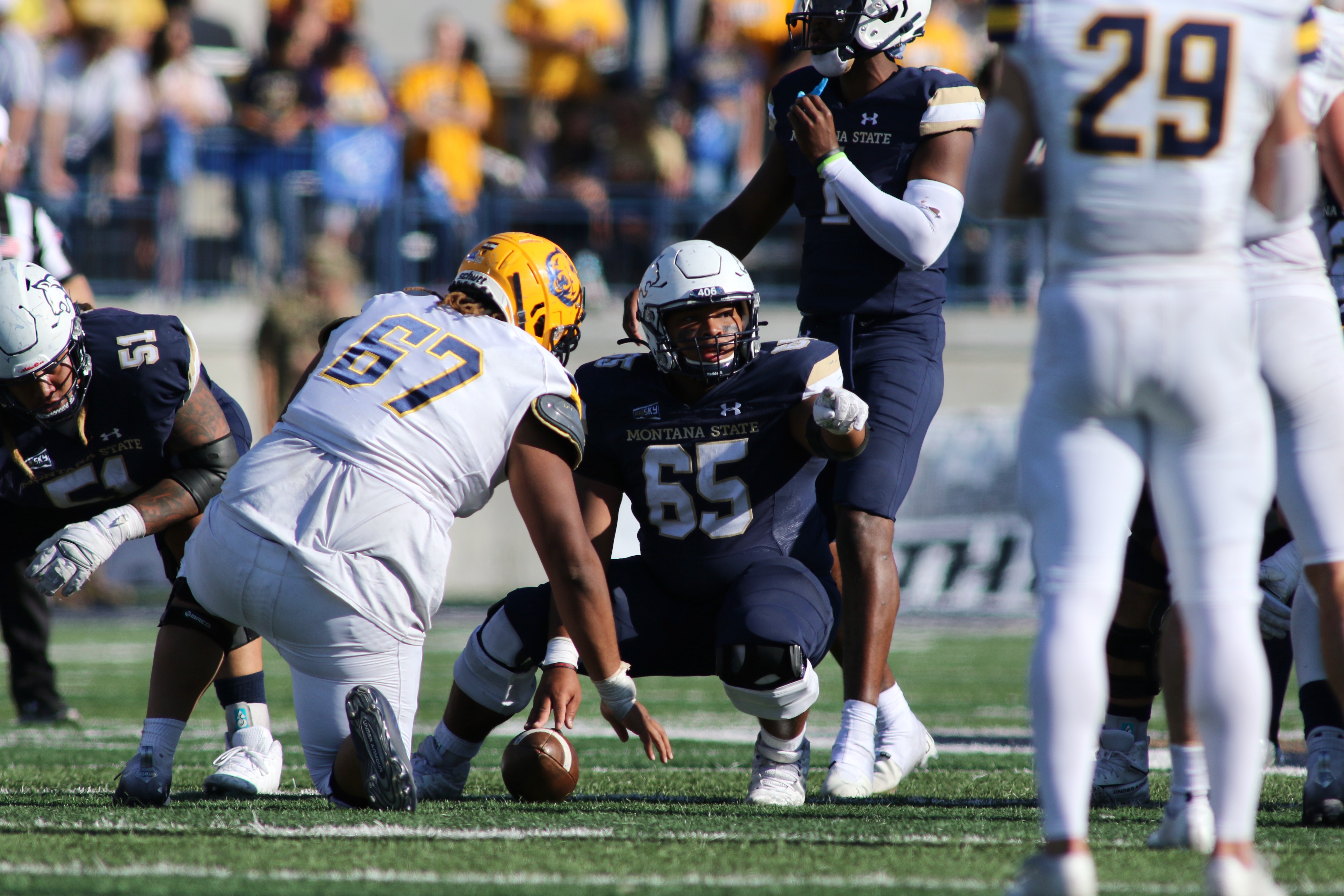
The rest of the two-deep is expected to be made up of freshmen and sophomores. Rush Reimer played with Session on the shelf last year during Reimer’s freshman year. The 6-foot-5 sophomore out of Camas, Washington is up to 302 pounds and is the expected starter at left tackle.
JT Reed came to MSU for part of a year, spent a year at San Mateo College, then transferred back to Montana State. The 6-foot-3, 285-pound sophomore has a strong punch and notable toughness, attributes that help him enter fall slated as the starter at left guard.
McElroy, a Missoula Loyola product who is coming off a knee injury, is expected to back up Marcus Wehr, a former defensive lineman out of Billings Central who is up to 290 pounds on his 6-foot-2 frame and has made the transition to right guard fluidly entering his third-year sophomore campaign.
The right tackle battle will be one of the position battles to watch this camp. Jacob Kettles, a highly touted 6-foot-4, 295-pounder out of Lynden, Washignton, came to MSU late as a grey shirt in 2020 after suffering a knee injury that also cost him the 2021 season. Kettles will battle Titan Fleischmann, a 6-foot-4, 300-pound redshirt freshman out of Pocatello, Idaho who has turned heads this off-season with his aggressiveness.
“I think it’s about determining how many of these guys we think, should be on the field,” Vigen said. “Last year, we left fall camp and our number maybe was at six, maybe seven? I think this year, that number realistically, is more, eight or nine.
“So now within that group, does that mean you’re rotating guys? Does that mean, you’re rotating guys early in particular, to get that experience growing? And then not asking that unit to do things that are incapable of. So I think part of fall camp is just where are our strengths? Where are areas that we probably need to protect?
1. RUNNING BACK
Isaiah Ifanse is and has been the best running back in the Big Sky Conference. You’ve heard us say it in print, on the Big Sky Breakdown, on ESPN radio, on SWX Montana television.
Ifanse has been a workhorse, a key cog and an intimidating, tone-setting presence out of the backfield since the former Washington Gatorade Player of the Year joined MSU ahead of the 2018 season.
Trying some Twitter audio….
— Skyline Sports (@SkylineSportsMT) August 4, 2022
Montana State head coach Brent Vigen on All-American running back Isaiah Ifanse’s health status #BigSkyFB pic.twitter.com/iyVZ5x8PVw
Last season, the battering ram shattered Ryan Johnson’s single-season rushing record, bulldozing his way to 1,623 yards and 10 touchdowns. He averaged a staggering 5.8 yards per carry on 280 carries, averaging 116 yards per game in the process.
He rushed for 103 yards in MSU’s opener against Wyoming, 217 on 30 carries to lift Vigen to his first Big Sky win at Portland State a few weeks later and never relinquished his torrid pace. Ifanse finished with eight 100-yard games, two 200-yard games (he had 217 yards on 32 carries against Eastern Washington) and an array of highlight reel runs, most including a punishing finishing effort.
By the end of the season, it was clear Ifanse was not at full strength. He did not look healthy the week following the EWU win, a 20-13 victory over Idaho, although he managed 84 yards on nine carries. He did not look even 50 percent in a 29-10 drubbing at the hands of rival Montana that snapped MSU’s four-game winning streak against the Grizzlies.
But Ifanse found a way to bounce back, rushing 28 times for 176 yards in a 26-7 win over UT Martin in the second round of the playoffs. His 105-yard effort in a 42-19 win at Sam Houston was a bit skewed; he averaged 2.7 yards per carry on 23 of his carries yet surpassed the century mark yet again because of a 42-yard touchdown run where he broke into open space and did his best to burst into the end-zone.
Ifanse never looked dangerous again, missing MSU’s semifinal win over South Dakota State and contributing mildly in MSU’s loss to NDSU in the national championship game. He had off-season surgery, missed spring ball and is out for fall camp.
“He’s on the back half of his recovery, the back side of his recovery and we are in a month to month mode, honestly right now,” Vigen said. “He’s working real hard though. He’s been real diligent about his recovery. His recovery, his surgery going back to late winter got pushed back because of the timing of the season finish. He wouldn’t trade that. He came back and played in that championship game for good reason. We are working through that and I suspect he’ll be back at some point in time. It will probably be on a monthly basis right now that we update that situation.”
That’s all to say replacing that sort of production is no small task. But Montana State knew this situation was coming. So the improved health of returners like Elijah Elliott and Lane Sumner, the continued development of former walk-on Garrett Coon and the addition of San Diego State transfer Kaegun Williams along with incoming freshman Jared White are all part of the plan to replace Ifanse’s insane production, particularly early in the season.
“We are not just counting on filling the void with help from the outside with Kaegun and Jared; you also have to look at Elijah and Lane, neither of them were really healthy last year. Lane got hurt against Wyoming and was really never the same. Elijah hadn’t had some ups and downs,” Vigen said. “So it starts with those two. And they both bring different things to the table. So it’s gonna have to be one way or another by committee.”
Sumner has been quietly been a productive player during his Bobcat career. The former Montana Class B 100-meter state champion is not “faster than he looks” like so many seem to say; in fact, he’s just plain fast. The 5-foot-8, 192-pound junior also has good vision and burst. He rushed for 424 yards and five touchdowns during the 2019 season before battling injuries all year in 2021. He managed just 40 carries for 141 yards (3.5 yards per carry) in seven games last season.
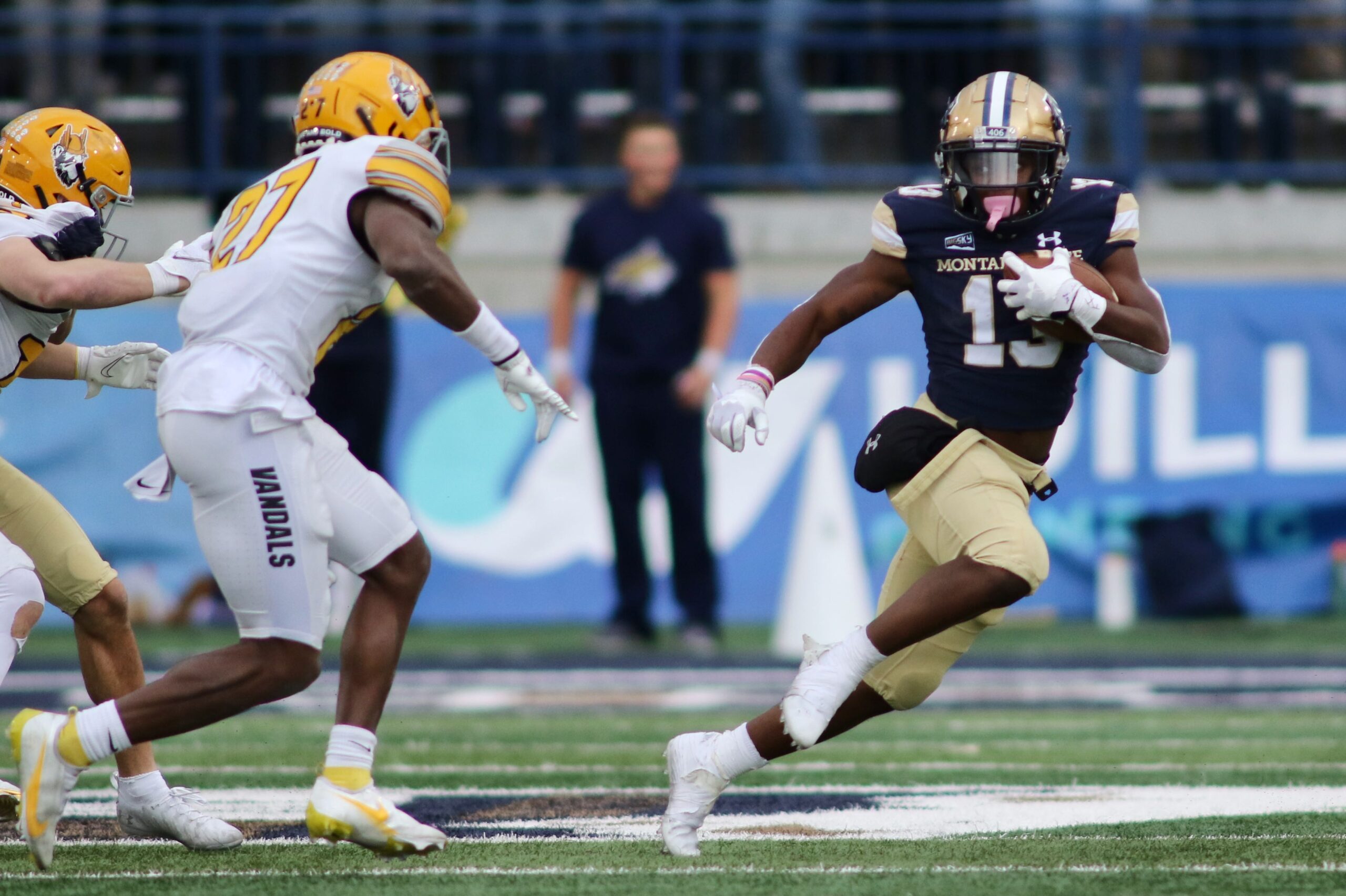
Elliott flashed during his redshirt year that also happened to coincide with the cancelled Covid-19 2020 season. The 5-foot-10, 175-pounder was expected to be Ifanse’s primary backup after showing well during fall ball in 2020 and last spring. He also battled injuries, but still finished his freshman year with 472 yards from scrimmage, including 319 on the ground. He averaged 5.1 yards per carry and ranked fourth on the squad with 16 catches.
His first career 100-yard effort came in a 40-7 win thrashing of Northern Colorado; the ‘Cats rushed for 276 yards that day and Ifanse went over the century mark too, finishing with 114 yards to Elliott’s 107.
Coon is the biggest of the group. The 6-foot, 205-pounder runs behind his pads and isn’t afraid to lower his shoulder. He showed toughness as one of the primary backs getting carries during spring football with Ifanse on the shelf and Williams nor White yet on campus. The 2019 Wyoming Gatorade Player of the Year played in just two games last season.
Williams is a 5-foot-9, 195-pound speedster from Cedar Hill, Texas. He rushed for 268 yards and two touchdowns at San Diego State in 2021. The graduate transfer rushed for 635 years over the last four seasons and five years spent at SDSU.
He rolled up more than 3,800 yards from scrimmage and scored 43 touchdowns in his three years as a dual-threat running back at Cedar Hill High, earning him a ranking as the seventh-best all-purpose running back recruit in the country according to Rivals.com.

White is a 5-foot-10, 195-pounder who signed with Montana State late in the process this past February. The ‘Cats played in White’s hometown (Frisco, Texas) on January 8. White first heard from MSU January 24. By February 2, he was signed and is expected to battle for carries. He rushed for 1,871 yards and scored 26 touchdowns at 5A Wakeland High. He was the leading rusher in the Dallas area in 5A.
“We leaned very heavily on Isaiah in every which way last year, and that was in part because those two (Sumner, Elliott) just didn’t have the type of seasons from a health perspective that we thought we’d hoped,” Vigen said. “I think those two are really important.
“Garrett Coon had a really good spring so he should not go unnoticed either. So we got five guys there. So I feel much better. We feel much better about our depth at that position.”

